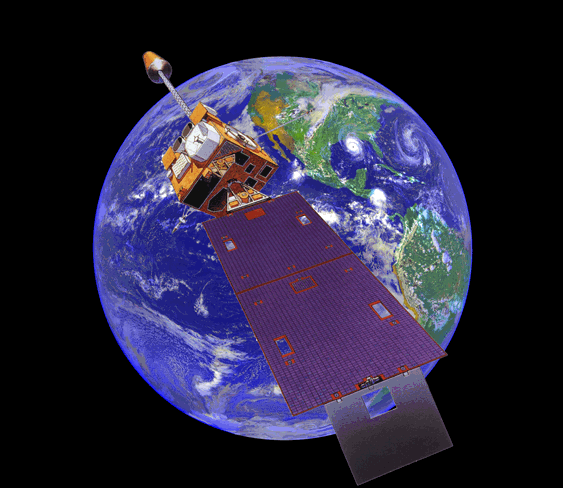Geostationary Operational Environmental Satellite (GOES) Real-time satellite cloud imagery and atmospheric sounding data from the geostationary meteorological satellites continues to be a major data source for tropical storms, severe weather, flood warnings, and short-range forecasts. NOAA's challenge is to develop new satellite products and services and to speed communication of this data to NWS forecast offices and other users. GOES-8, the first in a series of a new generation of geostationary satellite, was launched in April 1994. This new series of GOES has separate instrumentation to allow simultaneous observations from a 5-channel imager and a 19-channel sounder. GOES technology also provides visible and infrared imagery data updates as frequently as every 1 minute during severe weather warning situations over selected areas of the United States. A major goal for the NWS in the next two years is to get GOES sounder data into AWIPS, thus making this critical data source operationally available to NWS forecast offices and National Centers.
GOES Assessment The GOES Assessment evaluates the performance of the GOES-E/W satellites. It also evaluates the ability of the National Environmental Satellite Data and Information Service (NESDIS) to deliver products and to determine improvements and modifications for future satellite instruments.
Polar-Orbiting Operational Environmental Satellites (POES) Acquiring data from POES and the Defense Meteorological Satellite Program (DMSP) includes placing imagery and sounder data into numerical models. POES sites are located at the Storm Prediction Center, the Tropical Prediction Center, the National Operational Hydrologic Remote Sensing Center, and NWS Forecast Offices at Anchorage and Honolulu. The declining cost of satellite acquisition technology makes the polar combining NOAA and Department of Defense satellite requirements onto one polar platform an attractive cost saving alternative. The converged system is known as the National Polar-orbiting Operational Environmental Satellite System (NPOESS). OM is part of the team responsible for developing and updating a requirements document for NPOESS. The first NPOESS is scheduled for launch in the 2008. The top priority for these requirements is to increase data resolution to make it compatible with more complex numerical models and rapidly developing computer technologies. Related Websites
 Back to Office of Services Home Page
Back to Office of Services Home Page Weather Services, Weather Awareness, Data Analysis, Projects/Research, Education, Publications, Get Weather Information, NWS Partners, Contact Us
|
|||||||||
